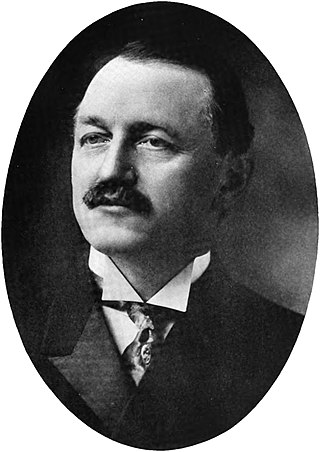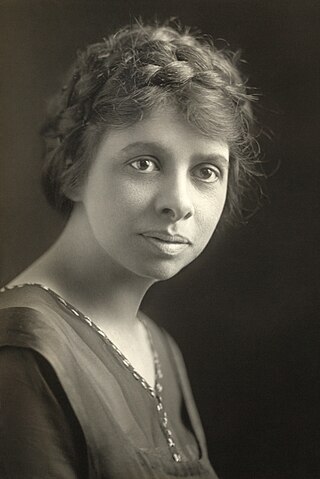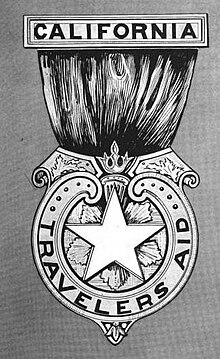
The Panama–Pacific International Exposition was a world's fair held in San Francisco, California, United States, from February 20 to December 4, 1915. Its stated purpose was to celebrate the completion of the Panama Canal, but it was widely seen in the city as an opportunity to showcase its recovery from the 1906 earthquake. The fair was constructed on a 636 acre(1 sq. mi., 2.6 km2) site along the northern shore, between the Presidio and Fort Mason, now known as the Marina District.

The Panama–California Exposition was a world exposition held in San Diego, California, between January 1, 1915, and January 1, 1917. The exposition celebrated the opening of the Panama Canal, and was meant to tout San Diego as the first United States port of call for ships traveling north after passing westward through the canal. The fair was held in San Diego's large urban Balboa Park. The park however also had a second Panama-California exposition again in 1935.

Isidore Konti was a Vienna-born sculptor. He began formal art studies at the age of 16 when he entered the Imperial Academy in Vienna, where he studied under Edmund von Hellmer. In 1886, he won a scholarship that allowed him to study in Rome for two years. While there he developed a love of Renaissance art that was to affect the nature of his mature sculpture. Upon returning to Austria, Konti worked as an architectural modeler.
Travelers Aid International is a global network that serves as a human services support system worldwide by facilitating interactions between social service agencies, airports, train stations, and other transit hubs in order to help children and adults who become stranded while traveling or are in distress or at risk of harm as a result of travel.
Grace Hoadley Dodge was an American philanthropist who was the first woman appointed a member of the New York Board of Education.

Daniel Dodge Frisbie was an American businessman and politician.

The Council of National Defense was a United States organization formed during World War I to coordinate resources and industry in support of the war effort, including the coordination of transportation, industrial and farm production, financial support for the war, and public morale.

William Church Osborn was the son of a prominent New York City family who served in a variety of civic roles including president of the Metropolitan Museum of Art, president of the Children's Aid Society, and president of the New York Society for the Relief of the Ruptured and Orphaned.

Arthur Putnam was an American sculptor and animalier who was recognized for his bronze sculptures of wild animals. Some of his artworks are public monuments. He was a well-known figure, both statewide and nationally, during the time he lived in California. Putnam was regarded as an artistic genius in San Francisco and his life was chronicled in the San Francisco and East Bay newspapers. He won a gold medal at the 1915 San Francisco world's fair, officially known as the Panama–Pacific International Exposition, and was responsible for large sculptural works that stand in San Francisco and San Diego. Putnam exhibited at the Armory Show in 1913, and his works were also exhibited in New York, Philadelphia, Chicago, Paris, and Rome.

Raymond Thomas Baker was a wealthy United States businessman who was Director of the United States Mint from 1917 to 1922.

Furio Piccirilli was an Italian-born American sculptor and one of the Piccirilli Brothers.

Frances Taft Grimes was an American sculptor, best remembered for her bas-relief portraits and busts.
The Travelers Aid Society of New York (TAS-NY) was founded by Grace Hoadley Dodge in New York City in 1907. Thirteen other prominent Christian and Jewish women, including the social worker Belle Moskowitz, made up the Society's first Board of Directors. The Travelers Aid Society's purpose was to provide social work to women traveling alone in order to protect them from moral danger. The TAS-NY believed that the greatest threat to female travelers in the early twentieth century was white slave trafficking, defined as the coercion of "white" women into prostitution and their subsequent sale to procurers or male clients. Agents of the Travelers Aid Society patrolled Grand Central Terminal and Pennsylvania Station, as well as the city's piers where transatlantic ocean liners docked, looking for women who they identified as vulnerable. Services usually entailed safely escorting women, immigrant and native-born alike, to city addresses, other transportation lines, or to a temporary lodging home, such as the YWCA. The TAS-NY's first headquarters was a four-story row house located a short walk from Grand Central Terminal at 238 East 48th St in the Turtle Bay neighborhood.

Sara Bard Field was an American poet, suffragist, free love advocate, Georgist, and Christian socialist. She worked on successful campaigns for women's suffrage in Oregon and Nevada. Working with Alice Paul and the National Woman's Party at the 1915 Panama-Pacific International Exposition in San Francisco, Field drove across the country from California to Washington, D.C., to present a petition containing a reported 500,000 signatures demanding a federal suffrage amendment to President Woodrow Wilson. She was known as a skilled orator and became a poet later in her career, marrying her long-time partner and mentor, poet and lawyer C.E.S. Wood.

Ethel Bailey Higgins was an American botanist and the curator of botany at the San Diego Natural History Museum from 1943 to 1957; she continued to serve as associate curator from 1957 to 1963. Higgins authored Our Native Cacti (1931), and other popular works on plants of the southwestern United States and northern Mexico.
Adelaide Deming was an American painter, associated for much of her life with Litchfield, Connecticut. She was the 1908 winner of the Beal Prize for her watercolor Moon Shadows.

Iris Calderhead was an American suffragist and organizer in the National Woman's Party. She earned an A.B. in English from the University of Kansas in 1910 and completed a graduate degree at Bryn Mawr College in 1913. She was the daughter of William A. Calderhead, the congressional representative for Kansas' 5th District from 1895 to 1911.

Annie Traquair Lang was an American Impressionist painter, known for experimental impasto brushstrokes and jewel-tone abstracted forms. She exhibited portraits, still lifes and landscapes at two dozen venues in Europe and the U.S., and institutions including the Metropolitan Museum of Art acquired her works. She was acclaimed in publications including the New York Times and The International Studio. She also earned praise for her collection of paintings by her mentor, William Merritt Chase, with whom she traveled in Europe and California. She was considered the Chase pupil "who best assimilated his technique and verve."

Fannie Jean Black was the president of the San Francisco California Club from 1910 to 1912 and the chairman for San Francisco County on Woman's Auxiliary Board for the Panama–Pacific International Exposition in 1915.
Ralph Helm Johonnot (1880–1940) was an American artist, designer, and arts educator, he is known for his educational series on color and interior decoration. He created paintings and prints, within the Arts and Crafts movement of still life and landscapes, as well as creating decorative work with his wife Salome Lavinia Johonnot. Together with Salome, they traveled to give educational lectures on the arts and created two private art schools, the Ralph Johonnot Studio in Richmond, California and Johonnot Summer School of Design and Hand Work in Pacific Grove, California. He was active in the arts throughout the state of California from approximately 1912–1940.
















